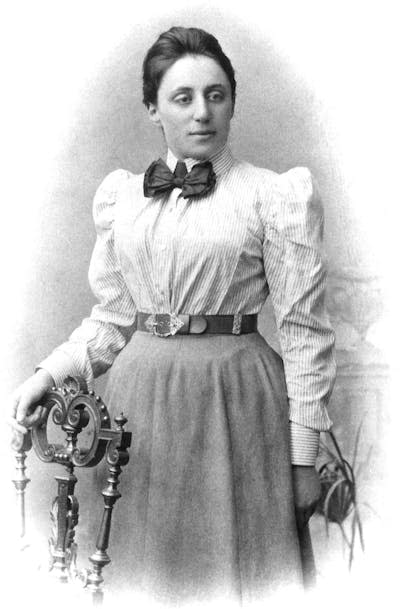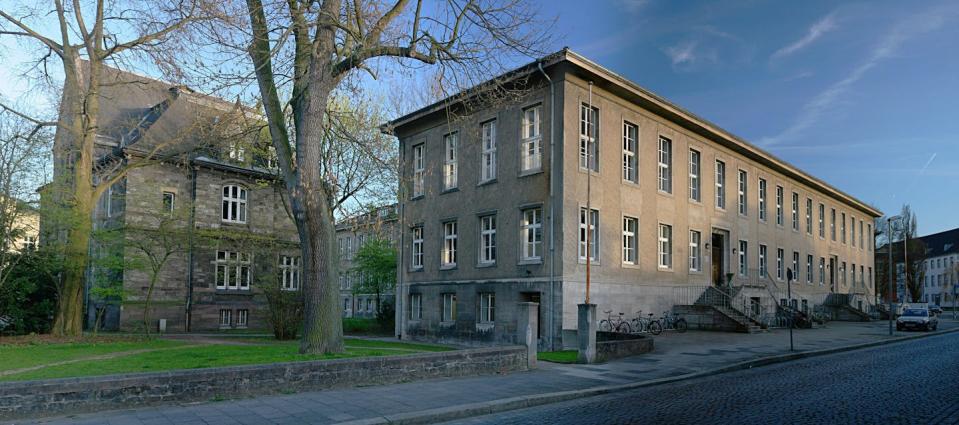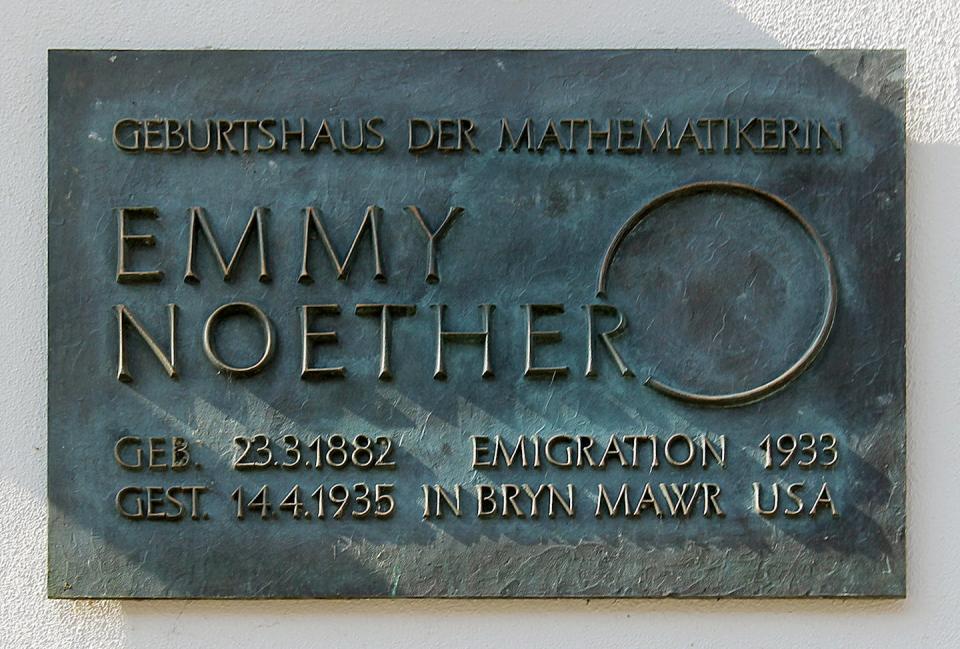When Albert Einstein wrote Emmy Noether’s obituary in 1935, he described her as a “creative genius of mathematics” who had not received the recognition she deserved despite “selfless, remarkable work over a period of many years”.
Noether made significant contributions to mathematics at a time when women were banned from academia and Jews like herself were persecuted in Nazi Germany, where she lived.
2021 was the 100th anniversary of Noether’s landmark paper on ring theory, a branch of theoretical mathematics that is still fascinating and challenging to mathematicians like me today.
I remember the first time I learned about Noether and the surprise I felt when my professor referred to the great ring theorist as “she.” Although I am a woman doing mathematics, I assumed that Noether was a man. I was surprised at how moved I was to find out she was also a woman.
Not many people know his inspiring story.
A rare woman in mathematics

Noether was born in 1882 in Erlangen, Germany. Her father was a professor of mathematics, but it seemed unlikely to young Noether that she would follow in his footsteps. At the time, not many women took classes in German universities, and when they did they could only explore them. Teaching at a university was out of the question.
But in 1903 – a few years after Noether graduated from an all-girls high school – the University of Erlangen began allowing women to enroll. Noether enrolled and eventually earned her doctorate in mathematics there.
That doctorate should have been the end of her mathematical career. At the time, women were not yet allowed to teach at universities in Germany. But Noether stuck with mathematics anyway, staying in Erlangen and unofficially supervising doctoral students without pay. In 1915, she applied for a position at the prestigious University of Göttingen. The dean of the university, also a mathematician, was in favor of hiring Noether, although his argument was far from feminist.
“I think women’s brains are unfit for mathematical production,” he wrote, but Noether stood out as “one of the rare exceptions.”
Unfortunately for Noether, the Prussian Ministry of Education would not allow the university to have a woman on its faculty, no matter how talented. Noether remained in Göttingen anyway and taught courses listed under the name of a male faculty member.
During those years, she continued to do research. Although still an unofficial lecturer, Noether made significant contributions to theoretical physics and Einstein’s theory of relativity. The university finally granted her lecturer status in 1919 – four years after she applied.


A revolution in ring theory
In 1921, just two years after becoming an official lecturer, Noether published revolutionary discoveries in ring theory that mathematicians are still thinking about and building on today. Noether’s work in ring theory is the main reason I, like many mathematicians today, know her name.
Ring theory is the study of mathematical objects called rings. Despite the name, these rings have nothing to do with circles or ring-shaped objects – theoretical or otherwise. In mathematics, a ring is a set of items that you can add, subtract, and multiply and always get another object in the set.
A classic example is the ring called Z. It is made of all the integers – positive and negative integers such as 0, 1, 2, 3, -1, -2, -3 and so on – and is a ring because if you add, subtract or multiply two integers, you always get another integer.
There are many infinity rings, and each one is different. Numbers, functions, matrices, polynomials or other abstract objects can be ringed – as long as there is a way to add, subtract and multiply them.
One reason rings are so interesting to mathematicians is that something can often be said to be a ring, but it is difficult to know much about the characteristics of that particular ring. It’s like seeing a croissant at a fancy bakery. You know you’re looking at a croissant, but you might not know if it’s filled with almond paste, chocolate or something else entirely.
Instead of focusing on one ring at a time, Noether showed that a whole class of rings has a common internal structure that is easy to recognize, like a row of houses with the same floor plan. These rings are now called Noetherian rings, and the structure they share is like a map that guides the mathematicians who study them.
Noetherian rings represent all time in modern mathematics. Noether’s map is still used by mathematicians today, not only in ring theory, but in other areas such as number theory and algebraic geometry.


Escape from Nazi Germany
Noether published her famous ring theory paper and other important results in mathematics while she was a lecturer in Göttingen from 1919 to 1933. But in the spring of 1933, the University of Göttingen received a telegram: Six faculty members – Noether among them – stopping. immediate instruction. The Nazis had passed a law that prohibited Jews from teaching.
Noether’s answer, it seems, was calm. “This thing is much less terrible to me than it is to many others,” she wrote in a letter to another mathematician. But she was out of a job, and no university in Germany could hire her.
Help came from the United States. Bryn Mawr, a women’s college in Pennsylvania, offered Noether a professorship through a special fund for German refugee scholars. Noether accepted the offer and, as a professor at Bryn Mawr, mentored four younger women – one doctoral student and three postdoctoral researchers – in advanced mathematics.
Noether’s time at Bryn Mawr was tragically cut short. In 1935 she underwent surgery to remove a tumor and died unexpectedly four days later.
At Noether’s funeral, the mathematician Hermann Weyl compared her sudden death to “the echo of a thunderclap”. In his short life, Noether shook up mathematics. She kept teaching and learning even when women and Jews were not welcome. A century later, his mathematical genius and “unbreakable optimism” are attributes.
This article is republished from The Conversation, a non-profit, independent news organization that brings you reliable facts and analysis to help you make sense of our complex world. It was written by: Tamar Lichter Blanks, Rutgers University
Read more:
Tamar Lichter Blanks received funding from the National Science Foundation through the Graduate Research Fellowship Program. She is a Fellow of the American Association for the Advancement of Science (AAAS) Media Science & Engineering Mass at The Conversation US sponsored by the American Mathematical Society.